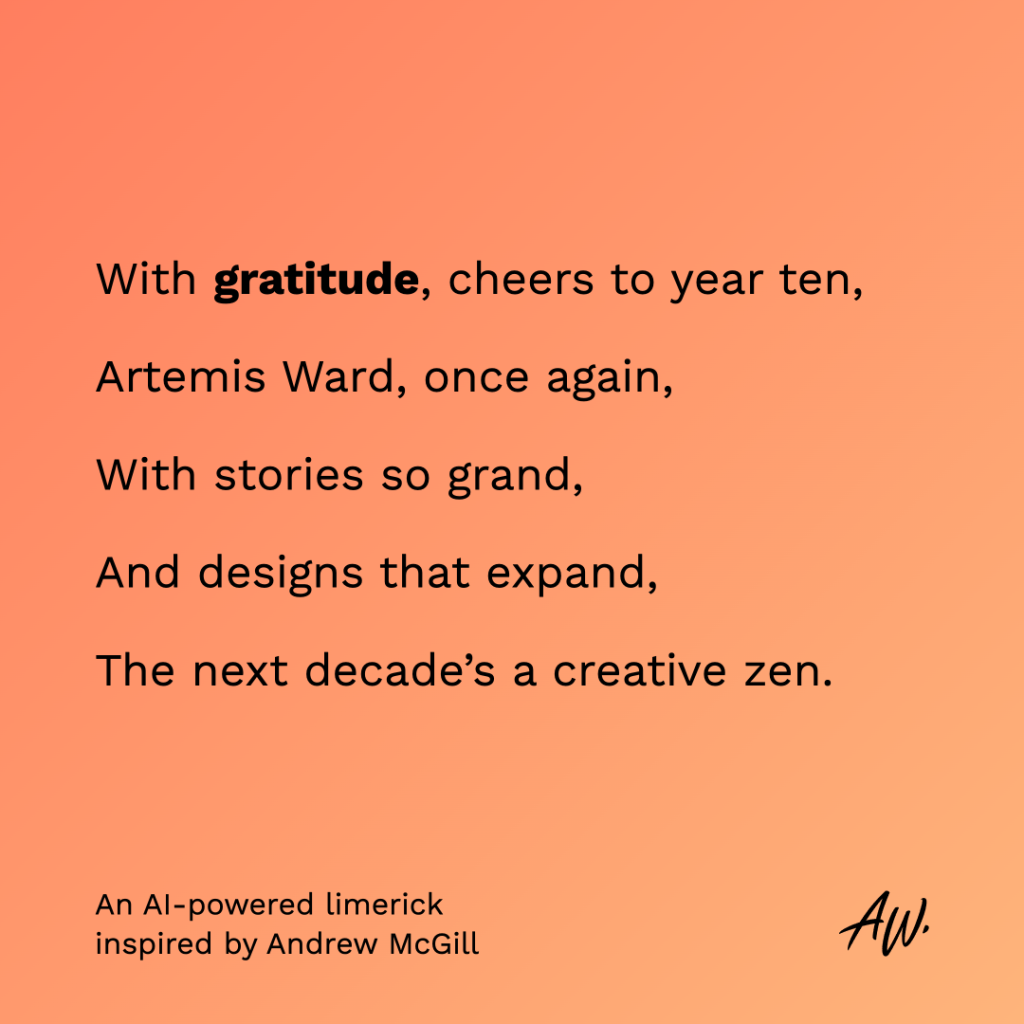My first AI public art project: Limericks on demand

Last night, I launched a new first: my first-ever public AI art project.
Earlier this month, I got a call from Joel Daly at Artemis Ward, an awesome DC-based creative agency with clients like Nike and National Geographic.
They were throwing a party to celebrate their 10th year in business, and Joel wanted to know: Could I make an AI-powered on-site exhibit, and could I do it in two weeks?
I'm Andrew McGill, a product builder who turns delightful ideas into real things.
I used to make stuff at The Atlantic and POLITICO. Now I build things with people like you.
He must know me well — I can't say no to a challenge like that!
The project
“The Ten Fête” wasn’t just a celebration of Artemis Ward’s accomplishments — it was a launch party for the next decade.
So I built something that paid homage to both:
- Partygoers were asked to text a phone number with one word describing Artemis Ward. (”Iconic,” “Innovative,” “Slaytastic” were all submissions.)
- I used a LLM to write a limerick about Artemis Ward using the word and bunch of background information about the agency.
- The user then got the Instagram-ready share card texted back to them…

- …and their limerick popped up on the on-site display. (Sorry for the crappy video, I waited WAY too late into the evening to record.)
What I learned
- You can accomplish a lot in 2 weeks!
- As always, you must be ruthless about scope — even when it means some of your favorite ideas end up on the cutting room floor.
- People LOVE customized content — I watch people submit again and again just to get new limericks.
Nerd corner
I’ll be brief, but here was the technical stack making this happen:
- The backend was written in Node.js and run as a series of AWS Lambdas, managed by the Serverless library;
- OpenAI’s GPT-4o handled the limerick creation (and also suggested the background gradient);
- All data was stored in AWS DynamoDB and exposed as a series of APIs;
- The cards were created using Puppeteer, also hosted on Lambda (I’ll tell you about THAT headache over a beer);
- The on-site display was a NextJS website hosted on Vercel, screenshared from Joel’s laptop to a vertical TV (with wifi supplied by Joel’s iPhone 😬)
In conclusion
This was a ton of fun to make, and I’m grateful to Joel and his partner Colin Moffett for trusting me.
Congratulations to Artemis Ward — here’s to another great 10 years 🥂

I’d love to chat. Drop me a line.